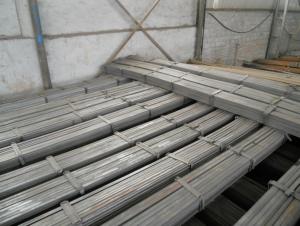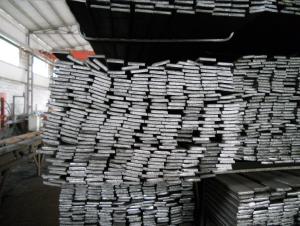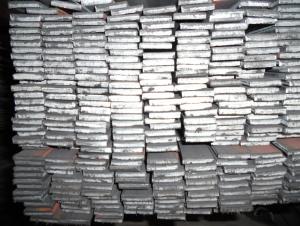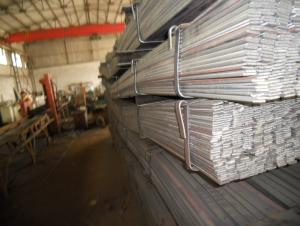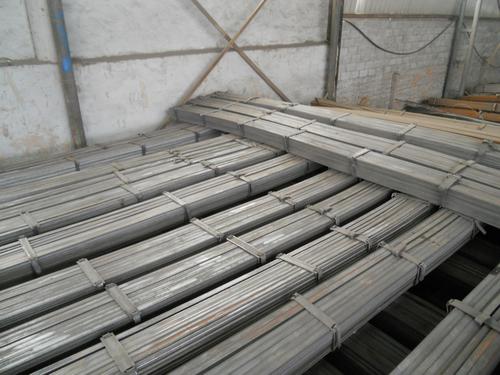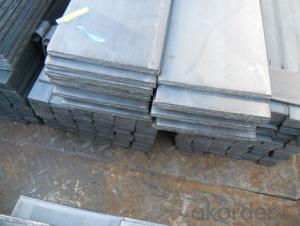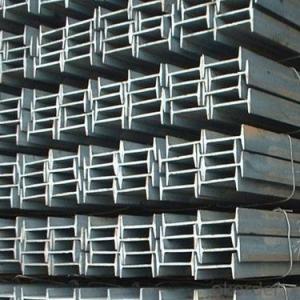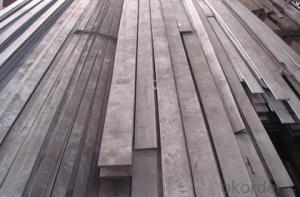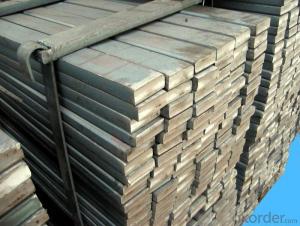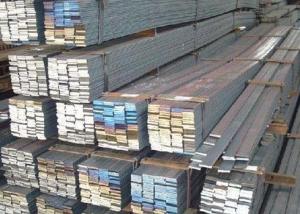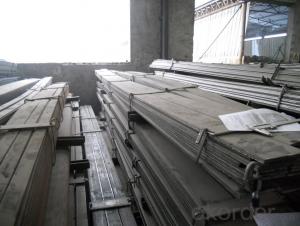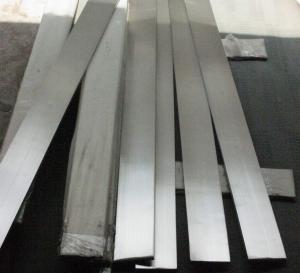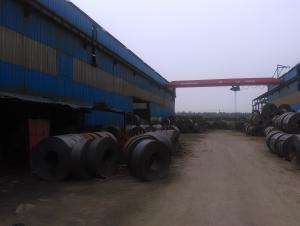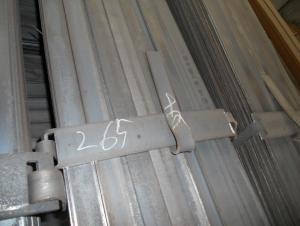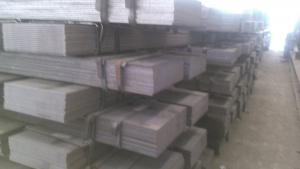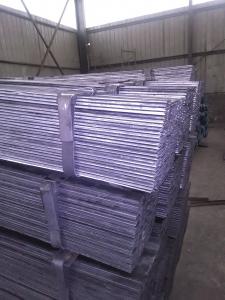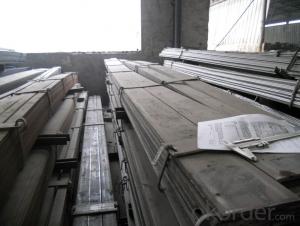Hot Rolled Steel Flat Bars for Construction
- Loading Port:
- Tianjin
- Payment Terms:
- TT or LC
- Min Order Qty:
- 25 m.t.
- Supply Capability:
- 100000 m.t./month
OKorder Service Pledge
OKorder Financial Service
You Might Also Like
Product Description:
OKorder is offering Hot Rolled Steel Flat Bars for Construction at great prices with worldwide shipping. Our supplier is a world-class manufacturer of steel, with our products utilized the world over. OKorder annually supplies products to European, North American and Asian markets. We provide quotations within 24 hours of receiving an inquiry and guarantee competitive prices.
Product Applications:
Hot Rolled Steel Flat Bars for Construction are ideal for structural applications and are widely used in the construction of buildings and bridges, and the manufacturing, petrochemical, and transportation industries.
Product Advantages:
OKorder's Hot Rolled Steel Flat Bars for Construction are durable, strong, and resist corrosion.
Main Product Features:
· Premium quality
· Prompt delivery & seaworthy packing (30 days after receiving deposit)
· Corrosion resistance
· Can be recycled and reused
· Mill test certification
· Professional Service
· Competitive pricing
Product Specifications:
Manufacture: Hot Rolled Steel Flat Bars for Construction
Grade: Q195 – 235
Certificates: ISO, SGS, BV, CIQ
Length: 6m – 12m, as per customer request
Packaging: Export packing, nude packing, bundled
Chemical composition of Q235
Alloy No | Grade | Element(%) | ||||
C
| Mn
| S
| P
| Si
| ||
Q235
|
B
|
0.12—0.20 |
0.3—0.7 |
≤0.045 |
≤0.045
|
≤0.3
|
Physical properties of Q235
Alloy No | Grade | Yielding strength point(Mpa) | Tensile strength (Mpa) | Elongation after fracture(%) | ||||||
Thickness (mm) | Thickness (mm) | |||||||||
≤16 | >16--40 | >40--60 | >60--100 | ≤16 | >16--40 | >40--60 | >60--100 | |||
≥ | ≥ | |||||||||
Q235 |
B |
235 |
225 |
215 |
205 |
375--500 |
26 |
25 |
24 |
23 |
FAQ:
Q1: Why buy Hot Rolled Steel Flat Bars for Construction from OKorder.com?
A1: All products offered byOKorder.com are carefully selected from China's most reliable manufacturing enterprises. Through its ISO certifications, OKorder.com adheres to the highest standards and a commitment to supply chain safety and customer satisfaction.
Q2: What is the normal tolerance of Hot Rolled Mild Steel Angle Beams for Structures and for Buildings?
A2: Normally 3%-5%, but we can also produce the goods according to the customers' requests.
Q3: How soon can we receive the product after purchase?
A3: Within three days of placing an order, we will begin production. The specific shipping date is dependent upon international and government factors, but is typically 7 to 10 workdays.
Images:

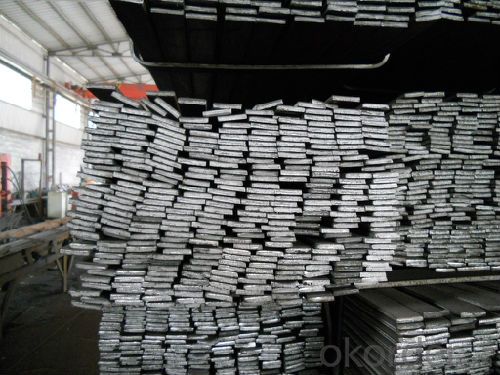
- Q: Can steel flat bars be galvanized or coated with other materials?
- Yes, steel flat bars can be galvanized or coated with other materials. Galvanization is a process in which a protective layer of zinc is applied to the surface of the steel to prevent corrosion. This can be done by either hot-dip galvanizing, where the steel is dipped in molten zinc, or by electroplating, where a zinc coating is applied through an electrochemical process. Apart from galvanization, steel flat bars can also be coated with other materials for various purposes. These coatings can provide additional protection against corrosion, improve aesthetic appearance, or enhance specific properties of the steel. Some common coating materials used for steel flat bars include epoxy, polyurethane, powder coating, and paint. These coatings can be applied through different methods, such as spraying, dipping, or powder coating, depending on the specific requirements and desired outcome. The choice of coating material and method depends on various factors, such as the intended use of the steel flat bars, the environment in which they will be used, and the desired appearance or performance characteristics. It is important to consult with experts or professionals in the field to determine the most suitable coating option for your specific needs.
- Q: Can steel flat bars be used for structural applications?
- Yes, steel flat bars can be used for structural applications. Steel flat bars are versatile and can provide structural support in various construction projects. They are commonly used in the construction of buildings, bridges, and other infrastructure. Their flat and wide shape makes them suitable for load-bearing purposes, such as beams, braces, and framing elements. Additionally, steel flat bars offer excellent strength and durability, making them capable of withstanding heavy loads and structural stresses. They can also be easily welded, bolted, or attached to other structural components, allowing for efficient and precise construction. Overall, steel flat bars are a reliable choice for structural applications due to their strength, versatility, and ease of use.
- Q: Are steel flat bars suitable for outdoor use?
- Yes, steel flat bars are suitable for outdoor use. Steel is known for its durability and resistance to weather elements such as rain, snow, and sunlight. It can withstand the harsh outdoor conditions, making it a reliable choice for various outdoor applications. Additionally, steel can be coated or treated to enhance its corrosion resistance, further increasing its suitability for outdoor use.
- Q: Can steel flat bars be used for making brackets or supports for agricultural machinery?
- Yes, steel flat bars can be used for making brackets or supports for agricultural machinery. Steel is a durable and strong material, making it suitable for providing the necessary support and stability required in agricultural machinery. Additionally, steel is resistant to corrosion, which is crucial in agricultural environments that are often exposed to moisture and harsh weather conditions.
- Q: What's the difference between stainless steel flat bar 304 and 316?
- From the metallography point of view, because the stainless steel contains chromium, the surface forms a very thin chromium film, which separates from the oxygen penetrated by the steel.
- Q: How do steel flat bars perform in terms of noise reduction?
- Steel flat bars do not have inherent noise reduction properties. They are primarily used for structural purposes and do not possess any acoustic or sound-absorbing characteristics. Therefore, when it comes to noise reduction, steel flat bars alone may not be the most effective solution. However, they can be used as a component in the construction of soundproofing systems or in conjunction with other materials that are specifically designed for noise reduction, such as acoustic panels or insulation. These additional elements, when combined with steel flat bars, can help to reduce noise levels by absorbing, blocking, or dispersing sound waves. Ultimately, the effectiveness of steel flat bars in terms of noise reduction will depend on how they are utilized within a comprehensive soundproofing strategy.
- Q: How do I determine the strength of a steel flat bar?
- To determine the strength of a steel flat bar, you need to consider its grade, which indicates the alloy composition and mechanical properties of the steel. The grade is usually marked on the bar or can be obtained from the manufacturer's specifications. Additionally, you can refer to industry standards or consult engineering handbooks that provide information on the strength and properties of various steel grades.
- Q: Are steel flat bars used in the automotive industry?
- Steel flat bars are widely utilized in the automotive industry. They find application in the fabrication of chassis frames, suspension components, seat frames, and door reinforcements. The utilization of steel flat bars brings forth numerous benefits in automotive manufacturing, encompassing remarkable strength, durability, and cost-effectiveness. Their adaptability and ease of shaping and welding render them a favorable option for a multitude of automotive structural and non-structural components. Furthermore, steel flat bars exhibit exceptional resistance to impact and fatigue, thus guaranteeing the safety and longevity of vehicles.
- Q: Lightning protection grounding, what is called three surface welding?
- When lap welding is adopted, the welding length is as follows:1, galvanized steel bar is not less than its width of 2 times, three surface welding. When the width of flat steel is different, the length of lap should be wide. Before laying, the flat steel should be adjusted straight, simmer, bend not to die, straight line should not be obvious bending, and should stand upright.2, galvanized round steel welding length of 6 times its diameter, and should be double-sided welding (when the diameter is not the same, the length of overlap in diameter should prevail).3, galvanized round steel and galvanized flat steel connection, its length is round steel diameter of 6 times.4, galvanized flat steel and galvanized steel pipe welding, in order to connect reliable, in addition to contact in itBoth sides of the site shall be welded, and the flat steel itself shall be bent in an arc to be welded with the steel pipe.
- Q: What are the different types of edges available for steel flat bars?
- There are several different types of edges available for steel flat bars, each serving a specific purpose and offering unique benefits. Some of the most common types of edges include: 1. Square Edge: This is the most basic and commonly used edge for steel flat bars. It is characterized by sharp, right-angled corners, making it suitable for general applications where precise dimensions and a clean appearance are required. 2. Rounded Edge: Also known as a radius edge, this type of edge features rounded corners instead of sharp angles. The rounded edge helps to reduce the risk of injury and makes the bar safer to handle, making it suitable for applications where safety is a concern, such as in schools or public areas. 3. Beveled Edge: A beveled edge refers to a sloping or angled edge along the length of the flat bar. This type of edge is often used to make the bar easier to fit into or align with other components, as the beveled shape allows for a smoother transition or connection. 4. Chamfered Edge: Similar to a beveled edge, a chamfered edge is created by cutting or grinding away a small portion of the material at a specific angle. This type of edge is commonly used for aesthetic purposes, creating a more decorative appearance on the flat bar. 5. Deburred Edge: When steel flat bars are cut or shaped, sharp burrs or rough edges may be left behind. To remove these imperfections and create a smooth, even edge, the bar is deburred. This process helps to enhance both the appearance and safety of the flat bar, preventing accidental cuts or scratches. The choice of edge type for steel flat bars depends on various factors such as intended application, safety requirements, aesthetic preferences, and ease of installation or connection. By understanding the different types of edges available, one can select the most suitable option for their specific needs.
Send your message to us
Hot Rolled Steel Flat Bars for Construction
- Loading Port:
- Tianjin
- Payment Terms:
- TT or LC
- Min Order Qty:
- 25 m.t.
- Supply Capability:
- 100000 m.t./month
OKorder Service Pledge
OKorder Financial Service
Similar products
Hot products
Hot Searches
Related keywords
